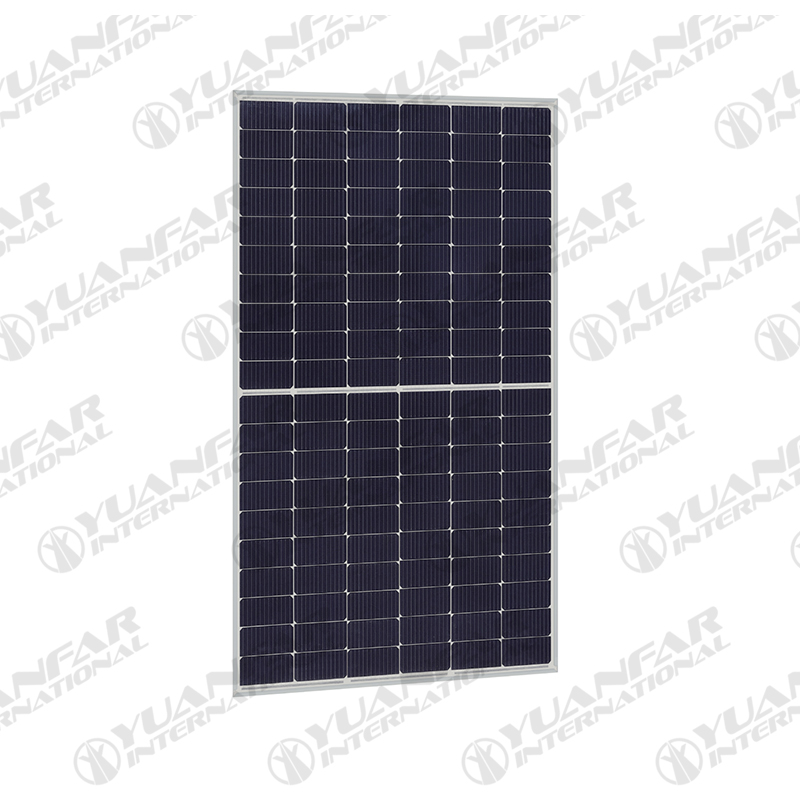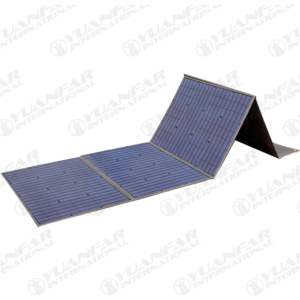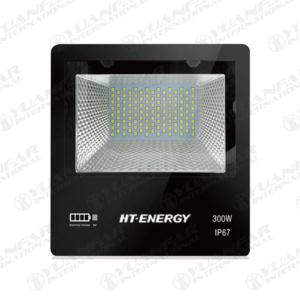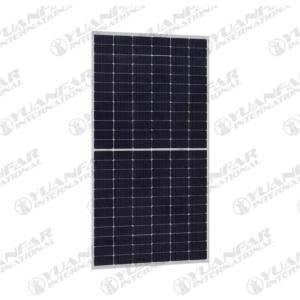HT60-156M-MC Half Cut Cell Solar Panel
- Product Details
- Company Profile
Half cut cell technolo- gy can reduce the internal power loss and improve compo- nent overall power. Excellent heat dissipation avoids hot spot production. Products warranty is 10 years and warranty on power output is 25 years.
HT60-156M-MC / HT60-156M(V)-MC series products insists of 120 pieces helf-cut Monocrystalline solar cells, and its power output can be up to 325W/330W/335W/340W/345W. Moreover, half cut cell technology can reduce the internal power loss and improve component overall power. Excellent heat dissipation avoids hot spot production. Its module efficiency can be 20.4%. With its advantages, it is usually used in North America and Europe market.
Engineering Drawing

Electrical Charateristricts
Module | HT60-156M-MC / HT60-156M(V)-MC | ||||
Maximum Power at STC(Pmax) | 325W | 330W | 335W | 340W | 345W |
Open-Circuit Voltage(Voc) | 40.3V | 40.4V | 40.5V | 40.6V | 40.7V |
Short-Circuit Current(Isc) | 10.61A | 10.74A | 10.87A | 11.00A | 11.14A |
Optimum Operating Voltage (Vmp) | 33.9V | 34.1V | 34.3V | 34.5V | 34.7V |
Optimum Operating Current(Imp) | 9.60A | 9.69A | 9.78A | 9.87A | 9.96A |
Module Efficiency | 19.3% | 19.6% | 19.9% | 20.1% | 20.4% |
Power Tolerance | 0 ~ +5W | ||||
Maximum System Voltage | 1000V / 1500V DC(IEC) | ||||
Maximum Series Fuse Rating | 15A | ||||
Operating Temperature | -40 °C to + 85 °C | ||||
*STC:Irradiance 1000W/m2,module temperature 25, AM=1.5
Optional black frame or white frame module according to customer requirements
Performance & advantages:
1. Higher power
2. Greater effective generating area
3. Large size technology is suitable for a variety of cell
4. Suitable for various packaging component technologies (including double-glass double-sided, slicing, MBB, imbricate)
5. Reduce the cost of power station system by about 0.8%
NOCT
Module | HT60-156M-MC / HT60-156M(V)-MC | ||||
Maximum Power | 241W | 244W | 248W | 252W | 256W |
Open Circuit Voltage (Voc) | 38.1V | 38.2V | 38.3V | 38.4V | 38.5V |
Short Circuit Current (Isc) | 8.57A | 8.67A | 8.78A | 8.88A | 8.99A |
Maximum Power Voltage (Vmp) | 32.0V | 32.2V | 32.4V | 32.6V | 32.8V |
Maximum Circuit Current (Imp) | 7.53A | 7.58A | 7.65A | 7.73A | 7.80A |
NOCT | 45°C±2°C | ||||
*NOCT:Irradiance 800W/m2,ambient temperature 20°C,wind speed 1 m/s
I-V Curves

Mechanical Characteristics
Solar Cells | Monocrystalline 158.75 × 79.375mm |
No.of Cells | 120 (6 × 20) |
Dimensions | 1684mm ×1002mm×35mm |
Weight | 19.0kg |
Front Glass | High transmission tempered glass |
Frame | Anodized aluminium alloy |
Junction Box | IP67 |
Cable | 4mm2 (IEC) Length: 900mm |
Connectors | MC4/MC4 Compatible |
Packaging Configuration | 30pcs / box, 780pcs / 40'HQ Container |
Temperature Characteristics
Temperature Coefficient of Pmax | γ (Pm) | -0.39%/K |
Temperature Coefficient of Voc | β (Voc) | -0.29%/K |
Temperature Coefficient of Isc | α (Isc) | 0.049%/K |
Warranty
10-year product warranty |  |
25-year warranty on power output | |
Specific information is referred to the product quality guarantee |
The use of 22% efficiency battery patching technology can make the module efficiency reach 20.07%, while the efficiency of the shingled module based on the 22% efficiency battery is only 19.6%. To be honest, I saw this data at the time was very disappointed with shingles. In theory, the shingle module packaging screen ratio can achieve the same level as the patch, but because the production process is too complicated, the yield is low, so Mass-production shingled components are actually less efficient than tiled components. If we look at the shingle CTM data again, the attitude towards shingle will change from disappointment to despair: the shingle module CTM is only 95%, which means that after buying 100 cells after dicing and lamination packaging The shingle module can only get 95 cells of power, which is equivalent to throwing away 5 cells.
The basic principle of shingled packaging will inevitably make its CTM data ugly and lower than conventional components. In shingled packaging mode, about 66 cells per 66 cells will be blocked by shingled packaging And wasted, in addition, because the shingles need to cut a battery sheet into 5 to 6 small battery strips, the battery efficiency will also be greatly lost during the laser cutting process.
In my original logic, I believe that in recent years, with the continuous decline in the price of silicon materials, silicon wafers, and solar cells, the proportion of "silicon" costs in the entire power plant system cost has become lower and lower, which has caused the "wasting" of shingling The shingled packaging method of cells but can improve the efficiency of components has gradually become economical. Until the emergence of patching completely disrupted the original logic, the patching technology achieved the component efficiency of not losing or even surpassing the shingle on the basis of not wasting the battery. Any meaning of existence.












 Free Member
Free Member 0
0 Chinese
Supplier
Chinese
Supplier


